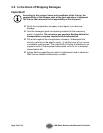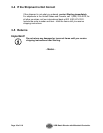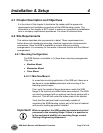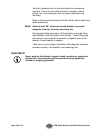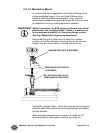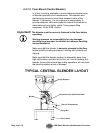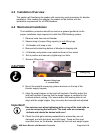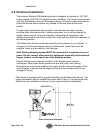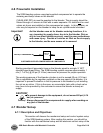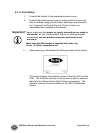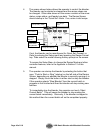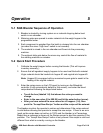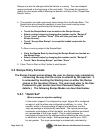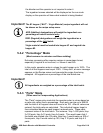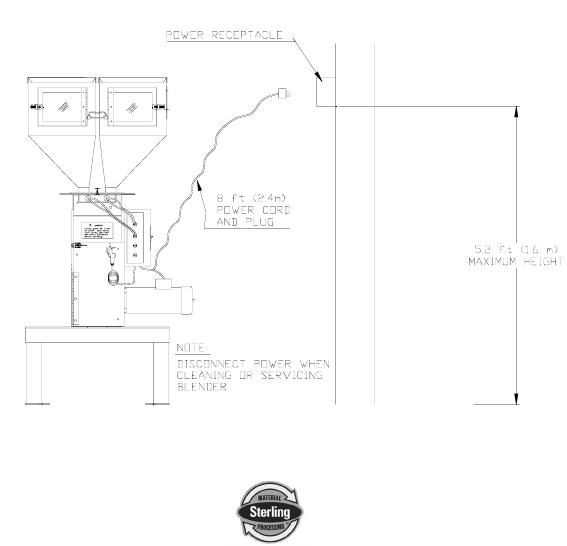
Page 42 of 118 SGB Batch Blender with Mitsubishi Controller
assemblies.
4-5 Electrical Installation
The standard Sterling SGB blending system is designed to operate on 120/1/60
supply voltage (220/1/50 CE models are also available). The current requirements
vary with the blender’s size and throughput rating. For exact current requirements,
check the blender serial number tag, located on the rear plate of the mixer
section.
If a step down transformer was provided, it should never be used to power
anything other than the blender. Loading equipment, etc. must be powered by
another power source. As well as possibly overloading the transformer, the
additional equipment may induce power line noise that may affect the operation of
the blending system.
The transformer will be mounted and wired by the customer or your installer. If
company or local codes require fusing or disconnects, these items must be
supplied, wired, and mounted by the customer.
Each Sterling blending system MUST be connected to a separate source of
power. Do not connect other electrical equipment, especially self-contained
hopper loaders, on the same line as the blending system.
Ensure that the power entrance location on the blender panel remains
unchanged. Make sure that the proper size wire and proper wire routing
techniques are used when installing the supply wiring to the control panel. Care
must be taken to ensure that the supply wiring does not interfere with the low
voltage DC wiring.
The blender is equipped with a plug that functions as the disconnect device. The
mating receptacle must be installed no higher than 5’ feet (1.6 m) above the floor.
Make sure your installation conforms to your regional electrical standards.
Power Receptacle Installation



